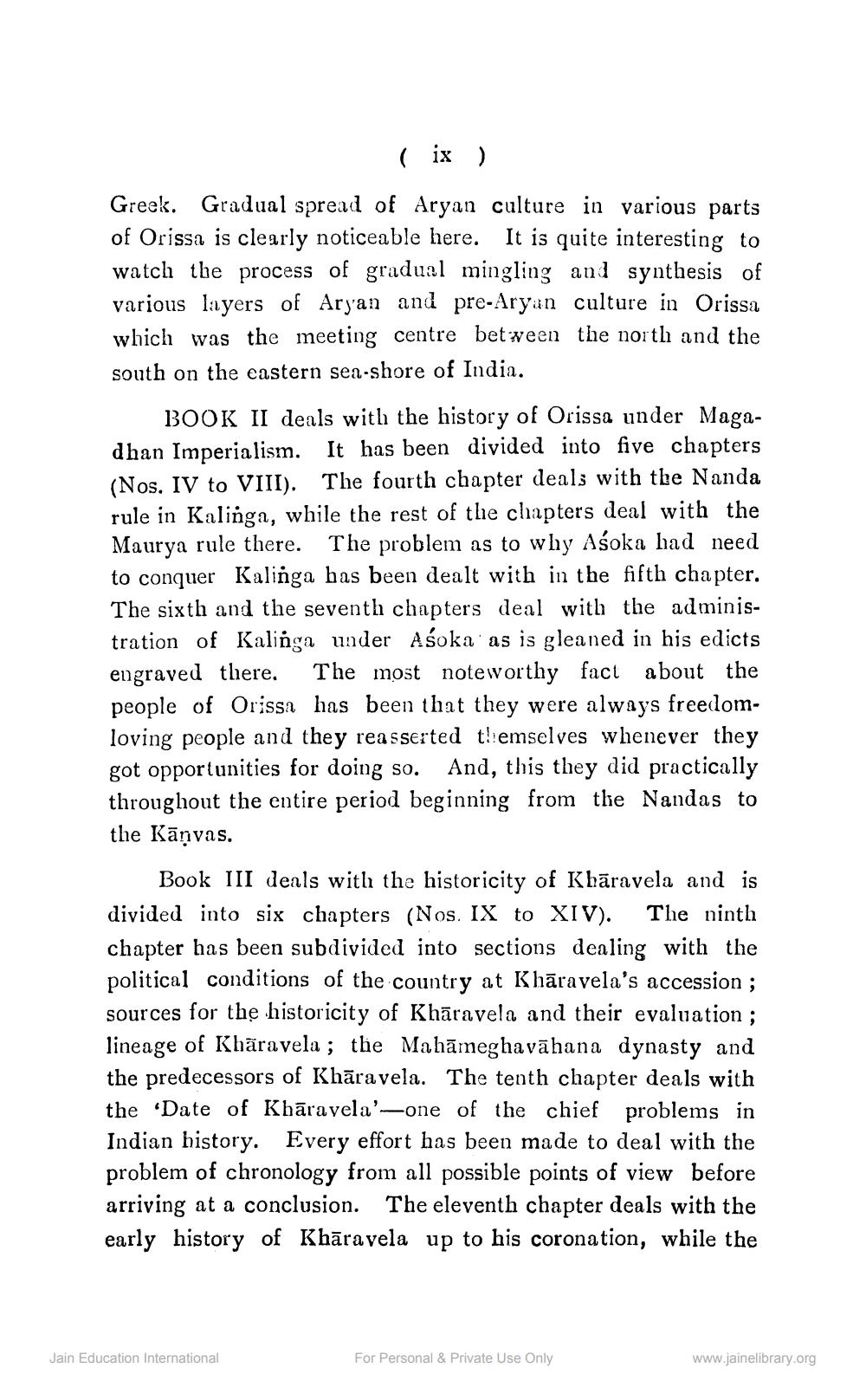________________
( ix ) Greek. Gradual spread of Aryan culture in various parts of Orissa is clearly noticeable here. It is quite interesting to watch the process of gradual mingling and synthesis of various layers of Aryan and pre-Aryan culture in Orissa which was the meeting centre between the north and the south on the eastern sea-shore of India.
BOOK II deals with the history of Orissa under Magadhan Imperialism. It has been divided into five chapters (Nos, IV to VIII). The fourth chapter deals with the Nanda rule in Kalinga, while the rest of the chapters deal with the Maurya rule there. The problem as to why Asoka had need to conquer Kalinga has been dealt with in the fifth chapter. The sixth and the seventh chapters deal with the administration of Kalinga under Asoka' as is gleaned in his edicts engraved there. The most noteworthy fact about the people of Orissa has been that they were always freedomloving people and they reasserted t!emselves whenever they got opportunities for doing so. And, this they did practically throughout the entire period beginning from the Nandas to the Kāņvas.
Book III deals with the historicity of Khāravela and is divided into six chapters (Nos. IX to XIV). The ninth chapter has been subdivided into sections dealing with the political conditions of the country at Khāravela's accession ; sources for the historicity of Khāravela and their evaluation ; lineage of Khāravela ; the Mahāmeghavāhana dynasty and the predecessors of Khāravela. The tenth chapter deals with the Date of Khāravela’—one of the chief problems in Indian history. Every effort has been made to deal with the problem of chronology from all possible points of view before arriving at a conclusion. The eleventh chapter deals with the early history of Khāravela up to his coronation, while the
Jain Education International
For Personal & Private Use Only
www.jainelibrary.org




